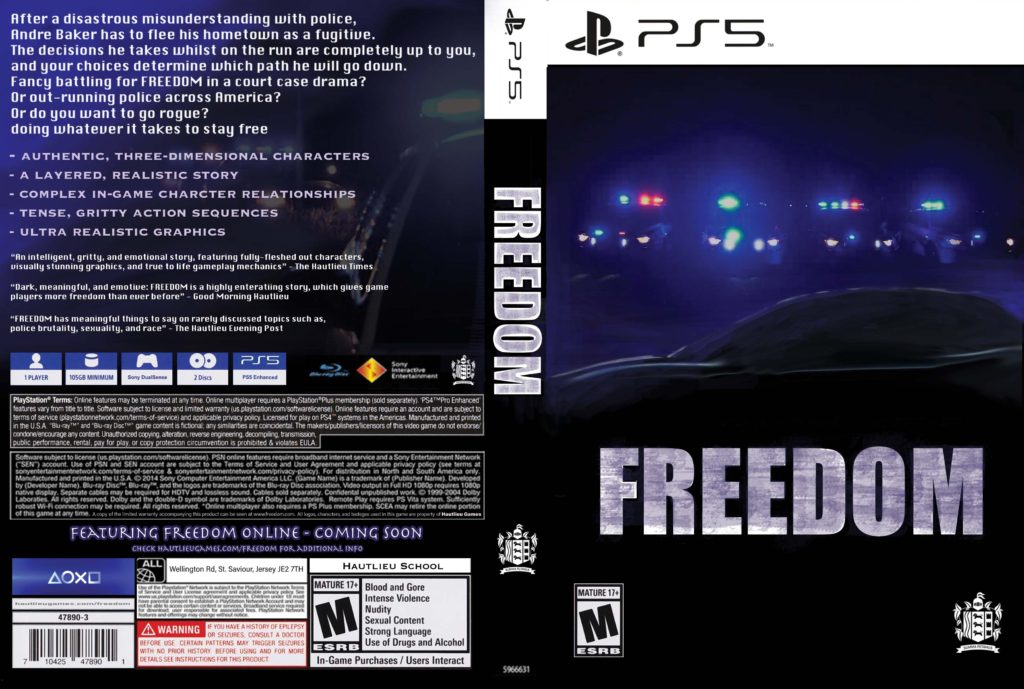
Video game cover – media


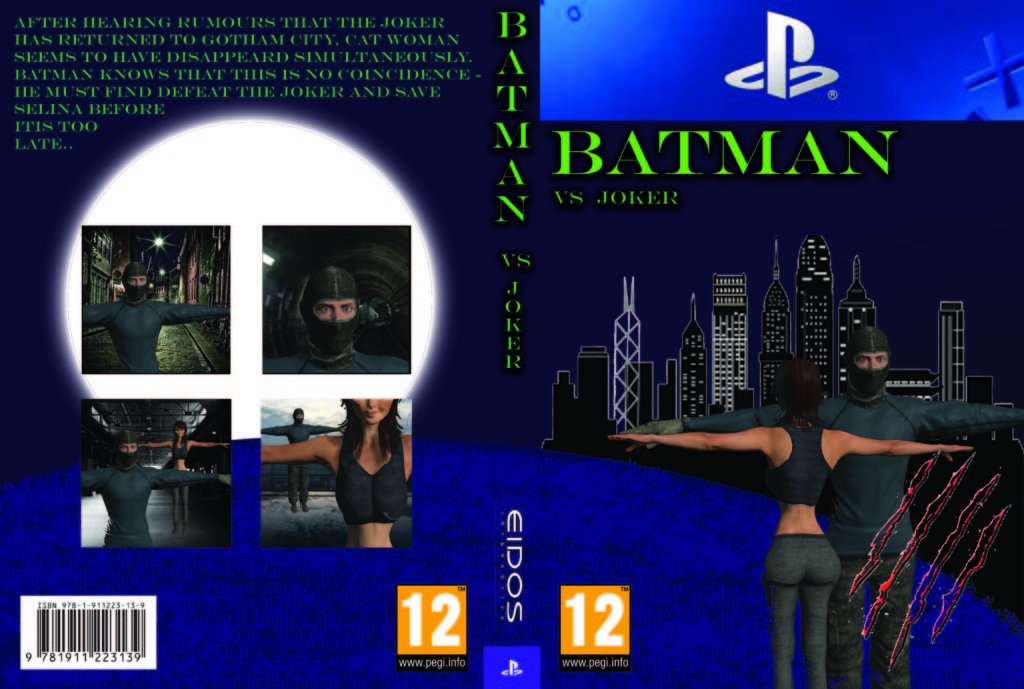
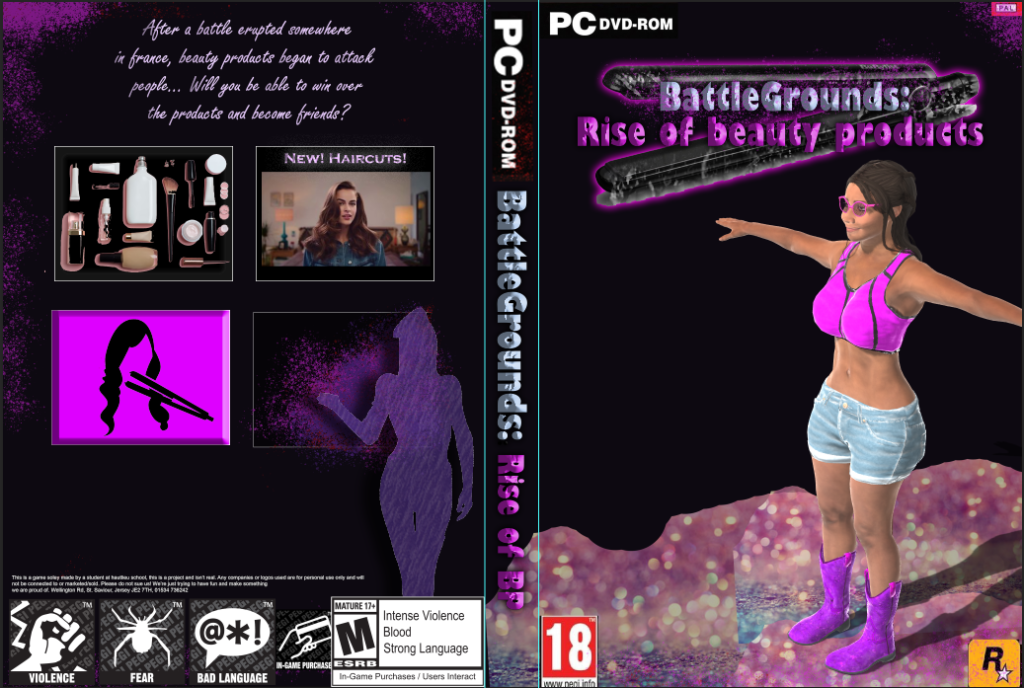
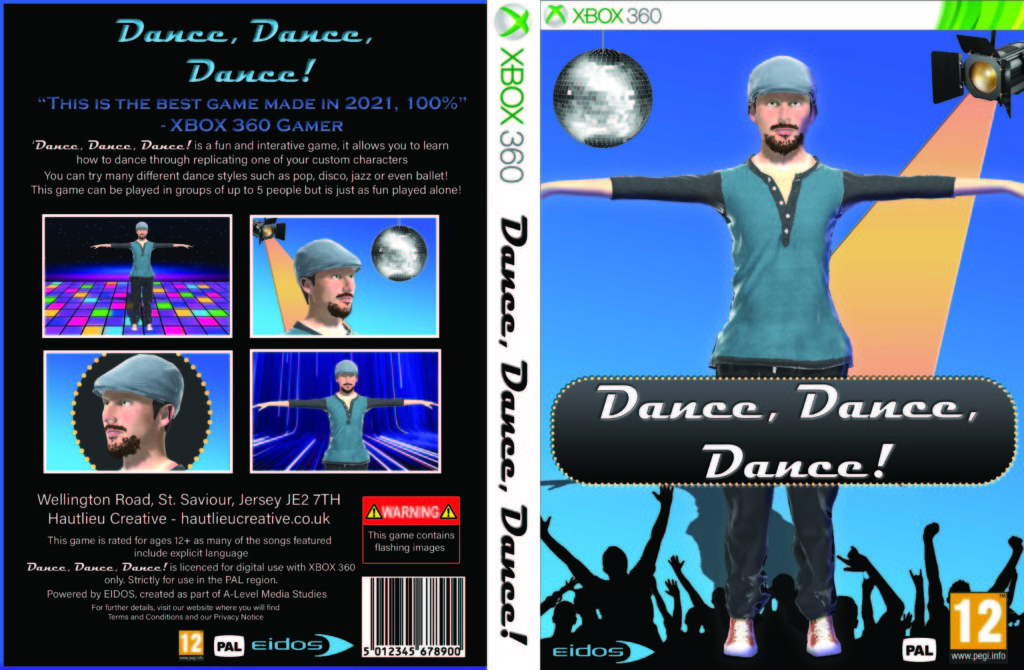
– I changed my dominant signifier, main character from a overly sexualised female whose body was accentuated and exaggerated to a male character with a more ‘realistic’ body type which has some feminine attributes. This character displays a radical representation which goes against the type of character the player would expect to be featured, a counter type
– The male character is wearing baggy clothing and is not particularly attractive, I didn’t want to display his figure or body type or focus on his appearance, rather his purpose in the game. This contrasts to my first design in which the female character wore tight, exposing clothing alongside excessive make up to appeal to the ‘Male Gaze’
– The male character juxtaposes the stereotypical dancer, or character you would picture on the cover of a dance game.
– I changed my colour scheme from a purple and pink scheme to a blue scheme. The blue colour links to the societal stereotype that blue has connotations of masculinity. This also juxtaposes the stereotypical femininity associated with dance in general.
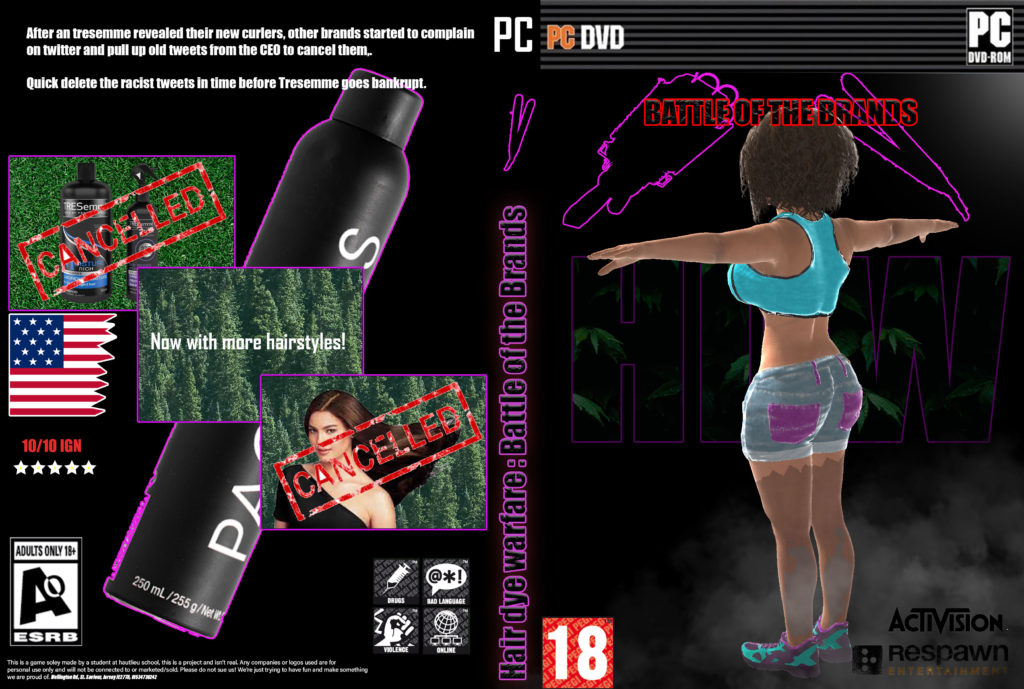


| Male gaze | Ways of how a straight male is seen to sexualise women |
| Voyeurism | Gaining sexual pleasure from watching others get naked or engaged in sexual activity |
| Patriarchy | The belief that the male is the superior gender; a society dominated by men |
| Positive and negative stereotypes | The socially looked up upon (positive) and looked down upon (negative) stereotypes. Positive examples (looked up upon) could be men being good at sport and women being caring, whereas negative examples (looked down upon) could be most Muslims being thought of as terrorists when in fact that is not the case. |
| Counter-types | Something that goes against the traditional stereotypes of people |
| Misrepresentation | False claims or ideas about how people are represented. This can give the wrong idea about someone. |
| Selective representation | When groups or people are selected to important positions and represent the majority. |
| Dominant ideology | Ideas or beliefs accepted by the majority of society. |
| Constructed reality | The process of people developing ideas and beliefs about themselves |
| Hegemony | Dominance or leadership of one specific group. |
| Audience positioning | How a certain type of audience might react to certain ideas or values. |
David Gauntlett
| Fluidity of identity | Identity changing through time, for example maturing when getting older. |
| Constructed identity | The process of developing beliefs and ideas of ones self. |
| Negotiated identity | The negotiation of changing your identity (eg. changing into your uniform for work) you negotiate your identity. |
| Collective identity | The idea of fitting into certain groups, whether its through, age, gender or hobby. |
I have produced a games cover called ‘Snowboarder x-treme’, which revolves around playing against your friends to reach the end of the snowboard race. This was influenced by a Snowboard Video game I used to play as a kid. This is stereotypically a masculine game as it is a type of sport, and to make this more reactionary, I had a female character on the front, who I exaggerated her features to further accentuate the masculinity of the game. Toril Moi’s research on the distinction between female, feminine, feminist categories can be seen on my cover with the female character in a ‘sexualised’ outfit with exaggerated features.
I intend to create a video games box inlay product for a dance video game, the title will be ‘Dance, Dance, Dance’. I intend to create two versions of the same product, one that is reactionary and one that is radical in representation. The main image and dominant signifier for will be of a character which I will create using Adobe Fuse. In the reactionary product, the stereotypical version, the dominant signifier will be of a female dancer, she will wear tight, exposing and revealing dance wear alongside enhancement of her physical features to ‘show off’ her body and engage the Male Gaze. This type of image is often seen on video games covers due to the societal norm of providing visual pleasure for straight men through media consumption.
Contrastingly, in the radical product, the counter type, the dancer will be a male character to counteract the social stereotype that dance is a typically ‘feminine’ activity which should only be carried out by women. He will wear comfortable, loose clothing such as jogging bottoms and a t-shirt. The character will portray a more realistic body type and a less enhanced image for people playing the game to look up to.
I will base my game cover on my style model, the ‘Just Dance’ video game series, as my idea is influenced by it. In the product, I will include typical textual features such as the game developer, the age rating, a title for the game series and particular game edition. I will also feature a paradigm of signs that revolve around dancing and music. On the back cover, I will include the legal notices and disclaimers that are expected on a video games cover, a blurb explaining the game, a website link and developer address, and also a storyboard of the different scenes included in the game play.
I want my product to represent ways in which women’s bodies and personalities are often over-sexualised in the general media, society, and in this case the digital game industry. I intend to prove that women do not need to provide pleasure for the male gaze whilst being represented as strong and independent in video games.
A mainstream company such as Nintendo, PlayStation or XBOX would make my product. The audience of my product would be children around age 9-13, ‘The Mainstreamer’, or anyone enjoys to dance